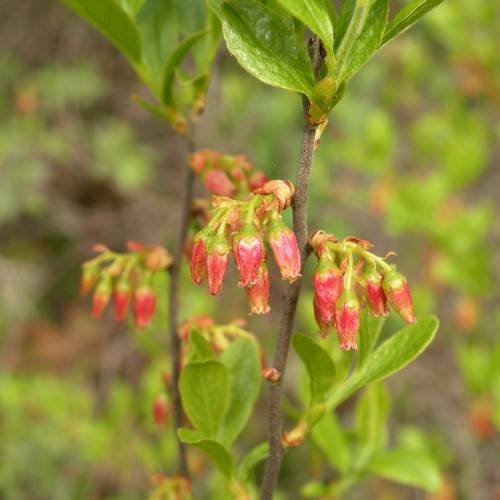
Black Huckleberry
Gaylussacia baccata
Cycle:
Perennial
Watering:
Average
Hardiness Zone:
Sun:
Partial sun
Soil:
Sandy,Loamy,Rocky
Fruits:
Fruits Ready In Fall
Edible:
Yes
Leaf:
Yes
Growth Rate:
Low
Drought Tolerant:
Yes
Salt Tolerant:
Yes
Care Level:
Medium
watering
The Black Huckleberry prefers moist soil, but can tolerate somewhat dry conditions. It should be watered about once a week or whenever the top few inches of soil feel dry to the touch. Water slowly and deeply to ensure that the water penetrates the soil rather than running off the surface. When watering, be sure to saturate the entire root area, allowing the excess water to drain away completely before the next watering. For best results, water early in the day or during the evening hours when temperatures are cooler, and can reduce potential water loss due to evaporation.
sunlight
Black huckleberry plants receive approximately 6-15 hours of direct sunlight each day. This should be spread out evenly throughout the day. The optimal amount of sunlight for the plant to thrive in its natural habitat is around 8 hours of direct sunlight. In general, Black huckleberry plants will do best when placed in sunny areas with partial shade to protect them in warmer climates.
pruning
Black Huckleberry can be pruned annually or semi-annually, depending on the desired shape and size of the shrub. Generally, pruning should take place between late winter and early to mid-spring for a healthy, new growth cycle. For the first few years after planting, pruning should be minimal, only removing dead and weak branches. After the fourth year, pruning can begin to shape the branches and you should remove any competing nests, shoots, and branches. Be sure to keep the bush's natural size and shape when pruning and do not trim it back severely.
